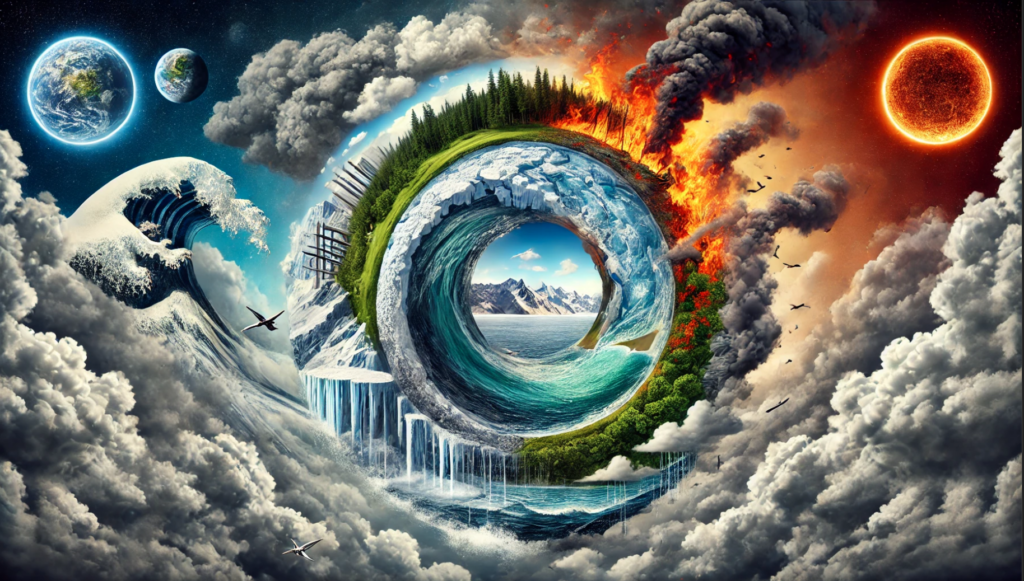How Climate Change Feeds on Itself: Understanding the Positive Feedback Loop

Climate change is a complex issue with far-reaching consequences, driven primarily by the increase in greenhouse gases like carbon dioxide (CO2) that trap heat in the atmosphere. As global temperatures rise, the Earth’s delicate balance is disrupted, leading to a series of feedback loops that exacerbate the problem.
One of the most concerning aspects of climate change is the positive feedback loop, where changes in the system amplify themselves. This means that once a certain threshold is crossed, the effects of climate change can perpetuate and intensify without additional external drivers.
Forests and Wildfires
Forests play a crucial role in absorbing CO2 from the atmosphere, acting as significant carbon sinks. However, as temperatures rise, the frequency and intensity of wildfires increase. These fires release massive amounts of stored CO2 back into the atmosphere, further increasing greenhouse gas concentrations and driving up temperatures. This creates a vicious cycle: higher temperatures lead to more fires, which in turn release more CO2, further accelerating warming.
Melting Ice and Albedo Effect
The melting of polar ice is another critical feedback loop. Ice and snow reflect sunlight, helping to keep the planet cool. This reflective ability, known as the albedo effect, diminishes as ice melts and is replaced by darker ocean water, which absorbs more heat. As the ice melts, the Earth’s surface absorbs more solar radiation, leading to further warming and more ice melt.
Ocean Changes
Oceans are significant carbon sinks, absorbing about a quarter of the CO2 emitted by human activities. However, warmer ocean temperatures reduce the ability of oceans to absorb CO2. Additionally, warming oceans can release methane stored in seabed deposits. Methane is a much more potent greenhouse gas than CO2, and its release can significantly accelerate global warming.
Altered Weather Patterns
Rising temperatures also disrupt weather patterns, leading to more extreme and unpredictable weather events such as storms, droughts, and heatwaves. These changes impact ecosystems, agriculture, and human infrastructure, creating additional stress on the environment and societies.
Breaking the Cycle
To mitigate these feedback loops, it is crucial to reduce greenhouse gas emissions. This can be achieved through transitioning to renewable energy sources, protecting and restoring forests, and implementing sustainable agricultural practices. Every action, no matter how small, contributes to breaking the cycle of climate change and preventing these feedback loops from spiraling out of control.
Understanding these feedback mechanisms is essential for grasping the urgency of climate action. By addressing the root causes and mitigating the impacts of climate change, we can work towards a more sustainable and resilient future for our planet.

